Call of Duty: Black Ops 6’s campaign is a return to form for the series, mixing the usual, slightly unsavoury real-world set dressing with cracking action, horror twists and tongue-in-cheek charm.
If you want to sum up Call of Duty: Black Ops 6‘s campaign in a single moment – and really all of Call of Duty in a way; this is quintessential CoD – then look no further than Ground Control, a mission roughly three-quarters of the way through the story.
Here, you’re assaulting an airport in the middle of a Gulf War ‘hot zone’, as Iraqi soldiers loyal to Saddam Hussein fend off an assault from the US at the same time as a mysterious, highly militarised organisation known as the Pantheon protects a valuable human target inside. It’s a sprawling, multi-stage mission, as many of Black Ops 6’s are, eventually leading to one truly spectacular moment that encapsulates it all.
After fighting into, through, and out the other side of the airport and then along the aisles of an aeroplane, it’s revealed that your target is actually elsewhere. And so, the spectacle: you and your pals burst out of the aeroplane exit onto the tarmac, launching out onto a battlefield in the midst of an intricately choreographed scene: explosions detonate, tanks roll by, soldiers yell, fire, are shot down or blown up and through the air all in a second. You charge forth into the chaos, shooting at everyone and everything, surging on to commandeer some armour of your own and, onwards.
It’s utterly spectacular, right up there with any of the most memorable action set-pieces in CoD history. It’s also completely ridiculous, almost by definition, and both narratively and contextually it does remarkably well to cover the full gamut of CoD-isms. Searching for a mysterious Russian bad guy whose intentions we don’t fully understand? Check. An uncomfortable, poorly-timed, and mostly unnecessary choice of real-world set dressing for the conflict? Check. A scene where you do a bit of war crimes on foreign soil but someone sort of comments on it so you don’t feel too bad? Check – hattrick!
That last bit’s worth digging into. There are minor plot spoilers here, so beware (it’s nothing major – there are a good few twists in this story and I’m not revealing any of those at all here). In brief: you catch your man and, amidst the wreckage of an exploded passenger plane, hold him up against a flaming, still-whirring engine propeller and – now with a choice of dialogue options! – start battering the truth out of him. Russel Adler, the Robert Redford-meets-dark-side-Kurt Russel star of previous Black Ops storylines, is here with you, and in all his typical moral ambiguity tells you you’re free to “dispose” of your guy upon finishing your interrogation. But no! There’s an American here! And he’s not having any of that. “You’ve got your ways and I’ve got mine, he’s in my custody now,” returning cameo Lawrence Sims declares, having foreshadowed his upstanding morality with a warning to behave at the beginning of the mission.
The trouble, of course, is that we have already broken the actual rules here by beating half the life out of a bloke while holding his head against a spinning meat grinder during ‘enhanced interrogation’. If you want to read this as an attempt to launder the reputation of US special forces, it’s not the most effective in that regard. More pertinent is the point that, really, this is just what Call of Duty is. Across Modern Warfare and Black Ops and the rest, you regularly play as morally dubious rogue operators existing outside and with open contempt of the ‘system’ of pesky international laws and processes. And for the most part, I am largely fine with this, in the same way I can find most slightly-dated action movies about rogue cops who don’t play by the rules wildly enjoyable while also not exactly universally maximisable in moral values. This is also Call of Duty developers’ consistent explanation whenever you ask them about these things: it’s a fun, 90s action flick, don’t think about it too much.
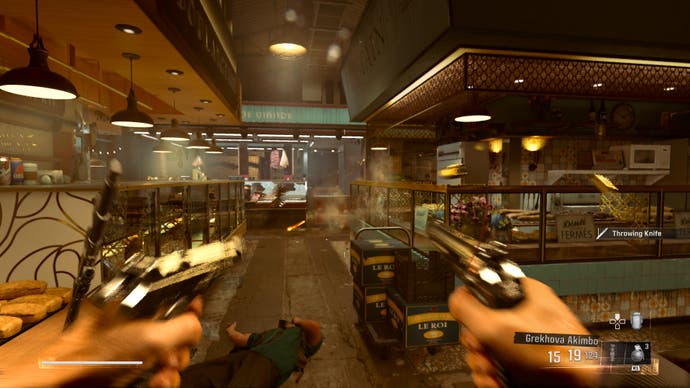
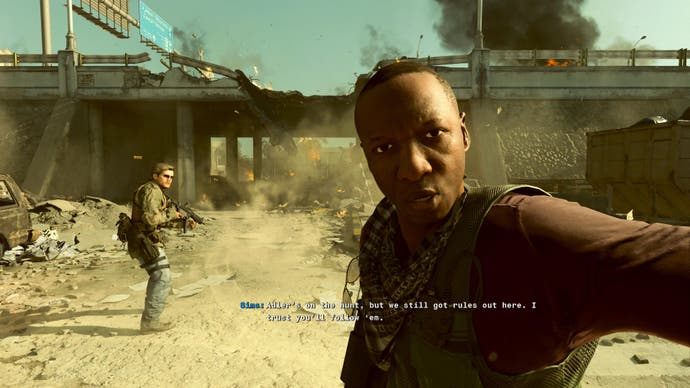

That’s fine, but where it gets tricky with CoD is your active role in it. It inevitably feels a bit weirder to be the one doing torture (especially in the context of your near-empty vessel player-character William ‘Case’ Calderon here) than it does to be passively watching a separate, independent character do it in a moment of narrative illustration in a film. There’s also just the continuing point of CoD’s ongoing relationship with the military of the US – licensing real guns, and so on – that adds important context here that makes the neutral, ‘don’t think about it too hard’ stance slightly harder to occupy. CoD is intentionally silly, enjoyably low-brow blockbuster entertainment; it also exists in the real world in a way we should probably pay attention to.
Related to that, there’s a wider point about Black Ops 6 that might make you wonder: what’s the Gulf War got to do with any of it?! The answer here is really not much at all. I was expecting a closer, and by dint of that more awkward, relationship to a war that’s still fresh in plenty of real memories and has ongoing consequences today. Instead, it’s really just a backdrop for the events of the story, which is instead a CIA thriller about decades-long psyops, personal feuds and family trauma. In one sense it’s a relief we’re not getting too tangled up with fully rewriting very modern history here; on the other, it makes the Gulf War moments a little crass. When the antagonist from the off is clearly specified as this strange Pantheon group, finding yourself sporadically blowing up Iraqis – whose nationality is repeatedly heralded by your allies with the same intonation as you might hear “Nazis!” being barked in a WW2 shooter – it all gets a bit weird. I thought we were just here to pick up a bit of intel and get back to our own personal business, not blow up Saddam’s palace and spend a very long time clearing out foreign army outposts in the desert.


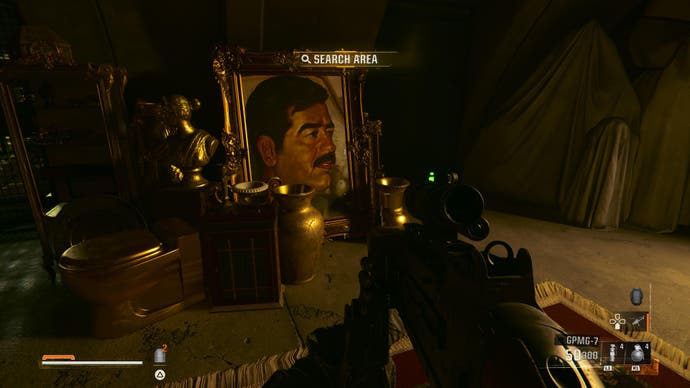
In appropriately peak Call of Duty fashion, the flipside to all of this is that if you can set aside the odd real-world context – if not fully revel in the ridiculousness of it at times – the actual missions themselves are extremely good fun. Their greatest strength is their variety, with many often evolving between genres and styles from one segment of the mission to the next.
One gem – of many – is a heist mission that has you splitting into groups and frequently swapping to play as each of your team’s separate specialists for certain segments. Simultaneously your group will be sneaking in via the well-patrolled sewers, cheating their way through a hand of poker, or fiddling with backroom servers, before all hell inevitably breaks loose. Another climaxes with a sensationally silly dual-wielding pistol shootout among a maze of outdoor market stalls. Another goes full horror – in now-typical Black Ops style – toying with reality via psychedelic drugs-slash-biological-weapons in a deeply eerie, underground government research facility with the faded scientific utopian vibes of a BioShock, or more recently (and perhaps more appropriately for the weird moral ambiguity at hand) something like Atomic Heart.
Across all of these is a wonderful sense of pacing. Call of Duty campaigns are always whiplash fast – I get about 50 percent of the pre-mission exposition at best these days, before I’m off sniping some guy because, hey, he was in front of my reticule. But here, there’s not only speed but rhythm, momentum, and troughs to go with the peaks. Beyond that, there’s also some truly magnificent environmental design. The detail of the casino heist level is extraordinary, a monument to overblown, mafioso opulence, but also that market shootout just features a stunning amount of detailed objects on screen. The horror segments feature some familiar tricks – developer Treyarch was beaten to the punch on move-when-you-don’t-look mannequins by Pacific Drive earlier this year, and there’s even an internal psyche level featuring the obligatory hop across abstract floating rocks. But they’re still deeply atmospheric, with the research facility level going all-in on mid century workplace optimism and late art deco drama.

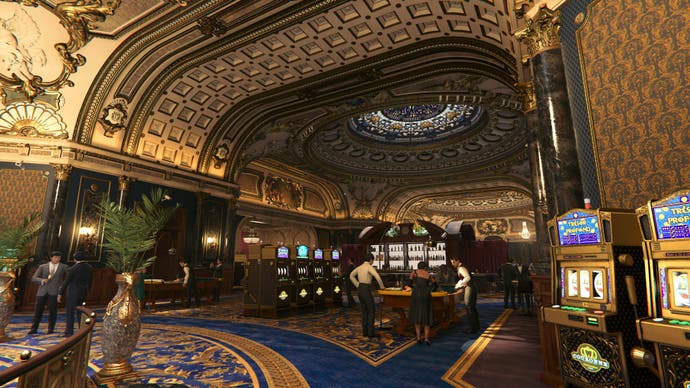

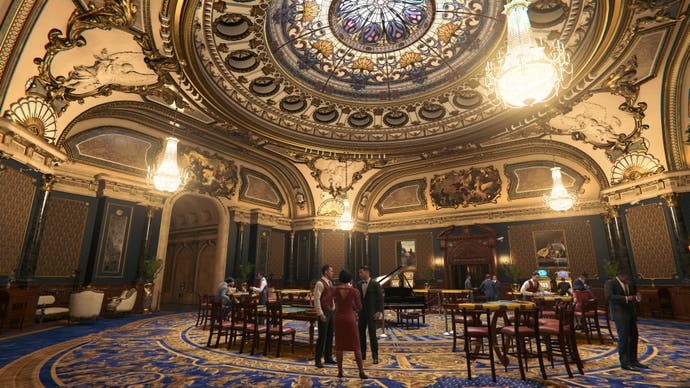
There’s very little to pick at here. One level, climaxing with the assault on Saddam Hussein’s palace, goes full open world, as parts of previous entries like Modern Warfare 3 had threatened to. It’s certainly the lightest of touches when it comes to open world design. The map is large, but you’re given free access to a vehicle that gets you around it rapidly. It features lots of outposts to assault as you please, Far Cry-style, but naturally there’s none of the more systemic, emergent pliability for you to work with here, nor the underlying RPG-lite systems of scavenging and crafting that make your victories feel especially earned. This is quite simply CoD but with lots of space: you arrive with a fully kitted-out sniper rifle you can get from travelling to a nearby, pre-marked waypoint for a cheeky chappy SAS bloke who gives it to you for free, alongside magical location tracking of every enemy in sight and out. You can refill your ammo infinitely from your vehicle, and thanks to what’s ultimately a fairly limited AI stealth system, you can pretty much snipe away with impunity.
Again, this is ultimately fine. Call of Duty is meant to be light, snackable, and instantly gratifying. If you ever fantasised about drumming in some cheat codes to these more involved open world outpost-em-ups and annihilating your foes with maxed out gear, a full arsenal of mortars, air support and just general near impunity, this is what you’re getting here. The trick to making this feel a bit more fleshed-out could have come from the little details that it’s maybe missing – what if you manually attach or detach your pre-supplied silencer, say, in the style of that old gem Black, for a bit of dramatic flair? But for a breezy, one-off mission designed for palate-cleansing variety, it works just fine.


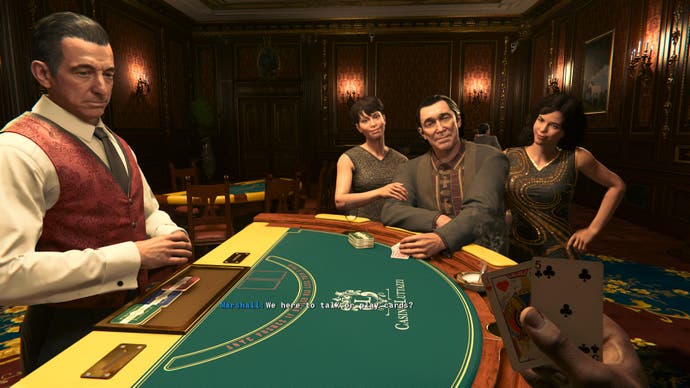
Finally, there is a surprising twist to all of this. Not the actual narrative twist, which is sort of the opposite of surprising – it’s Black Ops! It’s the CIA! Nothing is as it seems! – but the actual overarching approach of the story. Black Ops 6’s is surprisingly personal. Ultimately, it’s a tale of a small group of CIA cast-outs with personal vendettas of varying lengths and depths, facing off against an unnamed enemy who, equally, is revealed to have a deeply personal trauma informing their own motivations. Naturally most of these characters are larger-than-life, from the rogue Adler, through to the quietly murderous, mop-haired German tech wiz Felix and almost comically grizzled, bandana-sporting action veteran Woods. But newcomer Troy Marshall, for instance, is a firmly likeable moral throughline, effectively a supplanted protagonist for your own, strangely voiceless Case.
Between them, via overheard conversations and lore tidbits dotted around the puzzle-laiden, surely-haunted mansion in the woods you make your hideout, it’s easy to become surprisingly attached. I quite like this group of objectively immoral war criminals. And that’s about as apt a summary of Call of Duty: Black Ops 6’s campaign as I could offer, in fact. The usual mess of pseudo-historical wartime scenery, unnecessary real-world references and deeply muddled morality logic sits there in plain sight, next to a rip-roaring, bombastic, hugely enjoyable blitz of action, laced with a story of brainwashing, uncertainty and propaganda. If you can trust yourself to still separate right from wrong after a heavy dose of the usual CoD treatment, there’s no doubt you’ll have a total blast playing through it.
A copy of Call of Duty: Black Ops 6 was provided for review by Activision.